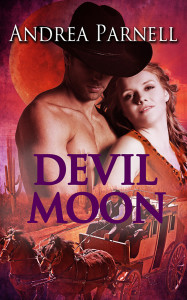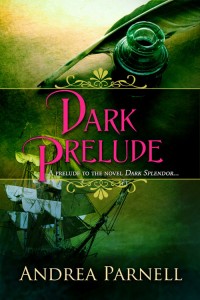Whispers at Midnight is a Gothic Romance set in Colonial Era America. I particularly like exploring the early days of our country and imagining what might have been. The following excerpt is from the prologue. I hope you will enjoy it. A longer excerpt is available at Amazon.
Whispers At Midnight
Virginia, July 1730
The night was hot and still. More so than any Evelyn Wicklow could ever remember. She held tightly to her husband’s arm, so that her steps would not falter and reveal the tug of fear at her heart. Not a sound rose up in the cloying heat, not the chirp of a cricket, not the song of a bird. It seemed both time and the movement of the elements had come to a halt as an omen of the evil she sensed.
“He’s a heartless man, Jubal,” her lovely, sad voice petitioned Jubal Wicklow. “If only there were another way.” Her soft gray eyes, rimmed with worry, pleaded silently with him. At sunrise Jubal would fight a duel on the riverbank near Wicklow House. Knowing he had been one of the best shots in England failed to ease Evelyn’s mind, for deep in her soul she already knew the outcome of this senseless contest.
A dark wave of apprehension swept through her as hazy images clouded her thoughts. Her head ached violently, yet her hands clung lovingly to those of her husband. Since childhood she had borne the peculiar gift of foretelling the future. Evelyn had often thought that ability was more of a burden than an advantage. Sometimes, as now, when the vision involved those to whom she was closest, what would happen could only be viewed through a deep, murky mist and not clearly enough to see one’s way. And yet she had read disaster in the dark warning clouds long before she knew John Mott had come to Virginia.
“Aye, but there will be no reasoning with John,” Jubal Wicklow responded calmly as he clasped Evelyn’s hands between his own. “Four years at sea with the man and I learned to know him well.” He did not try to make light of her words; instead he marked the depth of anguish in her voice and eyes. She was so lovely to him, with her fair hair and eyes which at times were as luminous and mysterious as silver moonlight. He never tired of looking at her, his Evelyn, the sweetest treasure a man could ever possess.
Jubal Wicklow smiled reassuringly. As always, Evelyn aroused his protective instinct. He did not ask what she saw. He knew the effort would only heighten her pain. He understood his wife’s power and the toll it required of her delicate body. For even though she possessed great spiritual strength, she was as fragile and beautiful as an orchid. Above all things in life, he swore to himself, he loved Evelyn and their young daughter, Elise. Nay, more than that, he loved nothing or no one else on earth.
Evelyn lifted her pretty chin. “I prayed, Jubal, you could settle this debt with John Mott without bloodshed.” Still, she did not believe prayers could help and would send Elise to a trusted friend in Williamsburg.
Jubal led his wife into the newly finished maze of hedges, her single request for the grounds of Wicklow.
“Bloody bastard,” he said, and nodded. “Begging your pardon, my love, but it boils my blood that he should come here making his challenge after a full decade. As for the debt he claims, there is but what he invents. John holds no right to the gold or the ruby. The full bounty we took on our last voyage we divided before returning to England. I take no blame that John Mott’s share rests on the ocean floor. He sailed into weather no sane man would have faced.” Jubal halted his steps at a turn in the hedges and glanced about until his puzzlement brought the wanted smile from Evelyn. She pointed out the correct path. “The blighter lost his crew to the last man,” he said. “It should be enough he has his life.”
“It is more than gold and jewels he has come for,” Evelyn said softly. She had not thought John would follow them to the colonies. With an ocean and the passage of time between them it seemed that her dreadful destiny with the man could be overcome.
Once she had been betrothed to John, a prosperous sea captain and a widower with a young child. As a girl of seventeen she might have been enthralled with the handsome Mott and even delighted in accepting the marriage her parents arranged. But there was always something about the man that his smooth words and elegant manners could not overcome. He frightened her.
A fortnight before the date of the wedding, John Mott introduced her to a seafaring companion, the exuberant and red-haired Jubal Wicklow. One week later Evelyn and Jubal eloped and in so doing made a fierce enemy of John Mott. Having seen in her vision what John meant to do, Evelyn convinced Jubal that they should leave immediately for the colonies. A month following their departure, John wed another young woman.
For once Evelyn believed the visions had been wrong. John had forgotten them. But now, on the tenth anniversary of her marriage to Jubal Wicklow, a duel would be fought. She did not enjoy seeing John Mott’s face so plainly in her mind. Indeed she could not shut it out as she prayed that once again what was destined would be postponed.
Jubal Wicklow embraced her. “You must not worry, love. No harm will come to me. Not to any of us. I promise you.”
“Jubal, my darling,” she whispered, wishing she could be reassured. “If it should, you must remember this: we will find one another again. That I can promise you.” Her soft, liquid eyes gazed deeply into his and then she kissed him long and lovingly. “For time, my darling, is only a moment after death.” Her voice softened. “I will wait for you, Jubal.”
********************************************************
Find Whispers at Midnight at your favorite ebook retailer:
 Western lore dominated my childhood. Kid-friendly western movies streamed from the local theater. I saw them all and yearned for life on a ranch, a six-shooter and spurs. Not much of that in Georgia farm country but a kid can dream. Decades later my dreams saw fruition when I began creating my own tales of the West. Though I had been weaned on male dominated features where women were merely in the supporting roles or part of the scenery, I wanted to showcase atypical women of the West.
Western lore dominated my childhood. Kid-friendly western movies streamed from the local theater. I saw them all and yearned for life on a ranch, a six-shooter and spurs. Not much of that in Georgia farm country but a kid can dream. Decades later my dreams saw fruition when I began creating my own tales of the West. Though I had been weaned on male dominated features where women were merely in the supporting roles or part of the scenery, I wanted to showcase atypical women of the West.